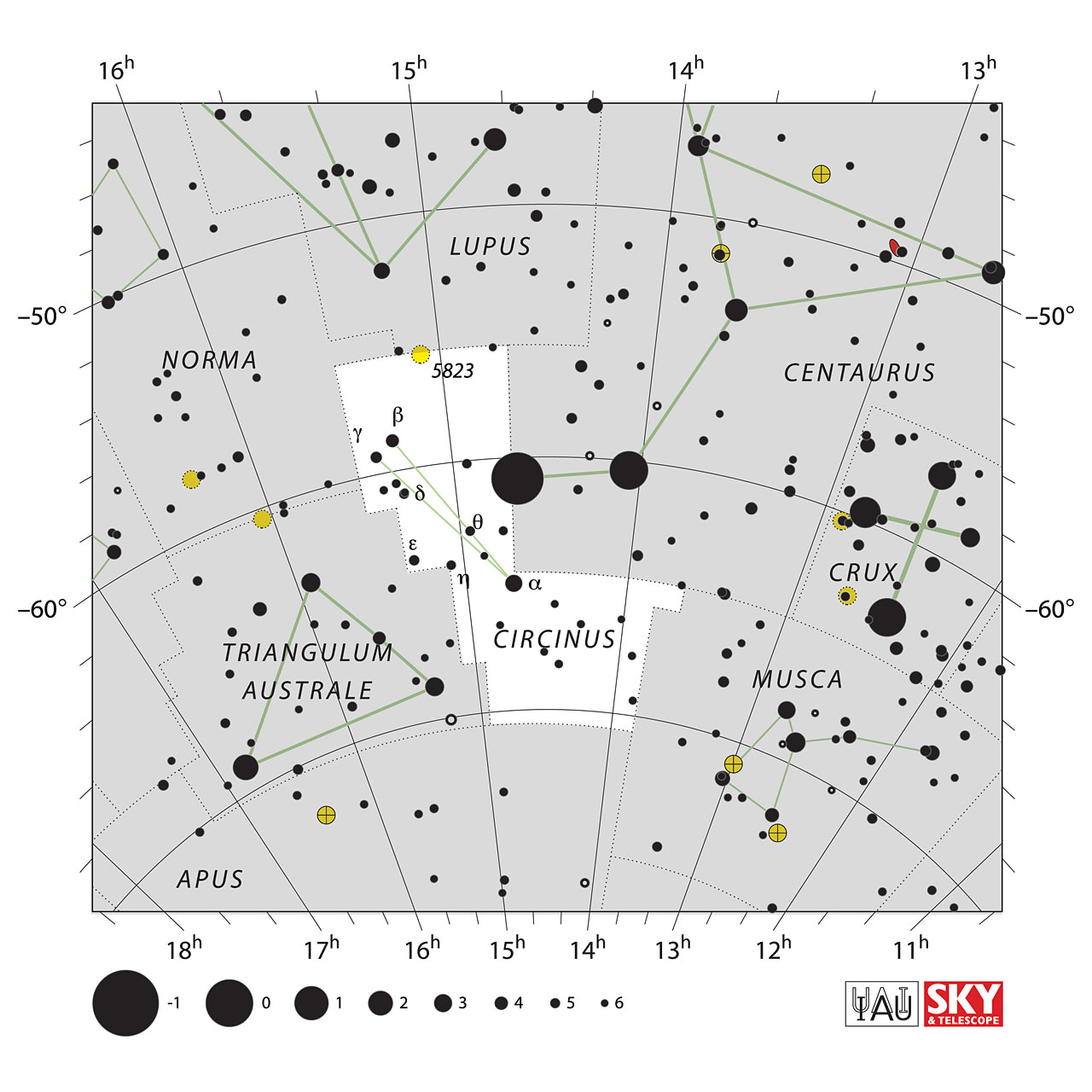Circinus


Circinus is the fourth smallest constellation, squeezed into a narrow gap between the front feet of Centaurus and Triangulum Australe.
It represents a pair of compasses and together with its neighbor Norma – a set square – forms a pair of constellations which celebrate drawing instruments. Both were introduced by the French astronomer Nicolas Louis de Lacaille in 1756.
Circinus is visible in the far southern sky in the months around April, but contains only one star brighter than fourth magnitude. It lies across the plane of the Milky Way and despite its small size contains four open clusters with NGC numbers, including the Caldwell object C88 (NGC 5823).
In the Indian system this constellation is called ವೃತ್ತಿನೀ (Vruttini)
Circinus contains:
-
Stars
- α-Cir (mag 3.2)
- β-Cir (mag 4.1)
- γ-Cir (mag 4.5)
- ε-Cir (mag 4.9)
- θ-Cir (mag 5.0)
- δ-Cir (mag 5.1)
- η-Cir (mag 5.2)
- HD 131342 (mag 5.2)
- HD 129422 (mag 5.4)
- HD 135591 (mag 5.4)
- HD 125835 (mag 5.6)
- HD 136359 (mag 5.7)
- HD 120913 (mag 5.7)
- HD 124471 (mag 5.7)
- HD 120404 (mag 5.8)
- HD 135160 (mag 5.8)
- HD 126241 (mag 5.8)
- HD 129954 (mag 5.9)
- HD 126862 (mag 5.9)
- AX Cir (mag 6.0)
- HD 121932 (mag 6.0)
- HD 128020 (mag 6.0)
- ζ-Cir (mag 6.1)
- HD 123377 (mag 6.1)
- HD 123492 (mag 6.1)
-
Open Clusters
-
Globular ClustersNone
-
GalaxyNone
View Circinus in 3D 
Source: Wikipedia, in-the-sky.org
Image Courtesy: Sky&Telescope & IAU, Illustration Images linked from Urania's Mirror on Wikmedia Commons by Sidney Hall
Image Courtesy: Sky&Telescope & IAU, Illustration Images linked from Urania's Mirror on Wikmedia Commons by Sidney Hall
